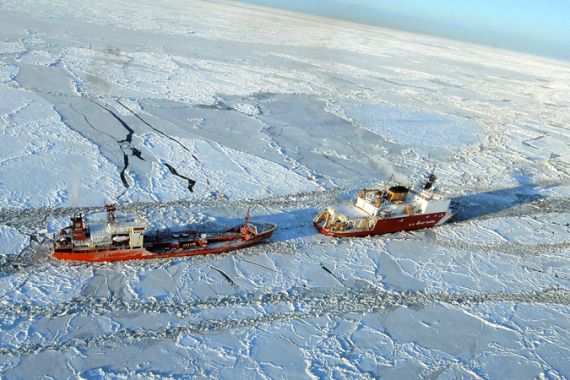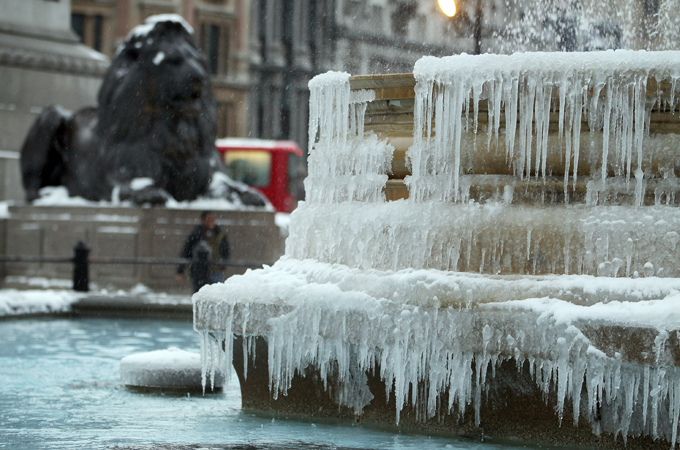Why is Europe so cold?
A look at the possible explanations for the big freeze affecting much of the continent

 |
| Ice in the fountains of Trafalgar Square [GALLO/GETTY] |
On a superficial level, providing an explanation for the cold weather across Europe is relatively straightforward.
An intense area of high pressure has developed across Russia. Winds circulating around this anticyclone, as it is called, blow in a clockwise direction. They drag very cold air from Siberia westwards, reaching as far west as the United Kingdom and as far south as Libya (which has experienced snowfall in recent days.)
Keep reading
list of 4 itemsTurtles swimming to extinction in Malaysia as male hatchlings feel heat
Could shipping containers be the answer to Ghana’s housing crisis?
Thousands protest against over-tourism in Spain’s Canary Islands
Cold air brings the threat of snow and lying snow insulates the ground allowing the air to radiate its heat out into space, thereby intensifying the cold.
But with global temperatures on the rise – the 20 warmest years in the last 110 have all occurred since 1987 and the last 11 years have featured in the top 12 years on record – surely this exceptionally cold (although not unprecedented) weather flies in the face of global warming?
It is important to note that climate scientists have never predicted an end to cold winters. The seasonal variability of the weather will certainly not decrease as the world becomes warmer. But scientists at Germany’s Potsdam Institute for Climate Impact Research claim that warming of the Arctic Ocean and the subsequent melting of sea ice are, more likely than not, responsible for the cold winter weather.
The demise of Arctic sea ice in recent years is beyond dispute: in December 2011 the extent of sea ice was the third lowest on record since 1979 and some scientists claim that summer sea ice could disappear as early as 2015, although the Intergovernmental Panel on Climate Change is less pessimistic, suggesting 2030.
Nevertheless, as the sea ice melts at an alarming rate, the Potsdam Institute point out that the albedo (the reflectivity) over the Arctic Ocean continues to decrease and more heat is absorbed by the waters creating a positive feedback.
As the polar winter sets in over the upper atmosphere, the warming at low levels causes instability in the atmosphere. The resulting low pressure systems at sea level disrupt the normal circulation.
This circulation is measured by the North Atlantic Oscillation (NAO) and the Arctic Oscillation (AO). The Institute believe that such low pressure systems enhance the NAO and AO early in the season but that, later in the winter, there is a delayed opposite effect. This would give rise to cold late winter spells across Europe.
Other research bodies, too, have hinted at a link between summer sea ice melt and cold European winters, although it should be pointed out that other groups have alternative explanations.
Dr Adam Scaife of the U.K. Met Office’s Hadley Centre said, “There is a pretty clear link between the current event and the upper level winds…We have verified several times using computer model experiments that this leads to high pressure across northern Europe and cold winter conditions in the UK as we see now.”
Whatever the underlying reasons for Europe’s cold winter, it appears that the cold air is set to remain with us for quite some time and the death toll, which already exceeds 400, is likely to continue to rise.